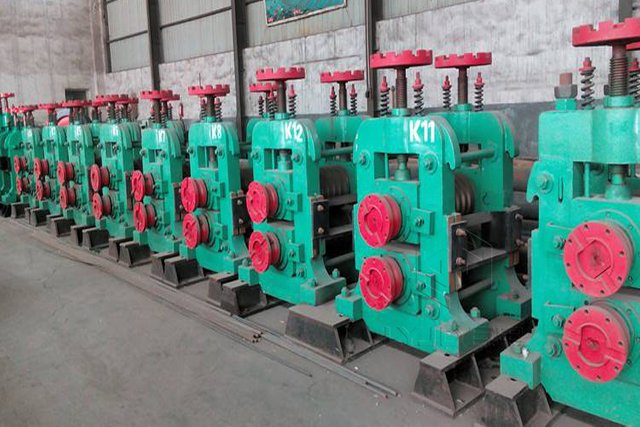What Is a Two High Rolling Mill?
A two-high rolling mill is another type of rolling mill used in metalworking processes. Unlike the four-high rolling mill, it has only two rolls—one on top and one on the bottom. The two rolls are typically of the same diameter and rotate in opposite directions.

Work Process of Two-high Rolling Mill Works
- The metal billet or slab is placed between the two rolls of the mill.
- The rolls rotate in opposite directions, and the metal is pulled between them.
- As the metal passes through the gap between the rolls, it undergoes deformation and is reduced in thickness.
- The gap between the rolls can be adjusted to control the thickness reduction and achieve the desired final thickness.
- The metal may go through multiple passes between the rolls to further reduce its thickness or improve its shape.
- The final product is a thinner metal sheet or strip that can be further processed or used in various applications.
Advantages and Limitations of Two-high Rolling Mill
While a two-high rolling mill has some distinct advantages, it also has certain limitations compared to other types of rolling mills.
Advantages
- Simplicity: Two-high rolling mills have a relatively simple design with only two rolls, making them easier to operate and maintain compared to more complex mill configurations. This simplicity can result in lower operational costs and reduced downtime for maintenance.
- Cost-effectiveness: Two-high mills are generally more cost-effective compared to other types of rolling mills, such as four-high or cluster mills. They have a simpler construction, require fewer components, and are generally less expensive to purchase and operate.
- Flexibility: Two-high rolling mills offer greater flexibility in terms of the range of materials they can process. They can handle a wide variety of metals, including steel, aluminum, copper, and alloys. This versatility makes them suitable for a range of applications in different industries.
- Thicker material processing: Two-high mills are better suited for processing thicker materials compared to some other types of rolling mills. The simplicity of their design allows for greater force and torque to be applied to the workpiece, enabling efficient reduction in thickness.
Limitations
- Limited thickness reduction: Compared to multi-roll mills, two-high mills have a limited capacity for reducing the thickness of materials. They may require multiple passes to achieve the desired thickness reduction, leading to a slower production rate.
- Less precise thickness control: Two-high mills may offer less precise control over the final thickness of the rolled material compared to more advanced rolling mill configurations. This limitation can affect the dimensional accuracy of the final product.
- Limited shape control: Two-high mills are generally less effective in shaping the material compared to specialized mills like shape rolling mills or cluster mills. They are primarily used for simple flat-rolling operations.
In Summary
Two-high rolling mills are commonly used for hot rolling of metals, such as steel, aluminum, and copper. They are particularly suitable for initial hot rolling operations, where the metal is heated to high temperatures to make it more malleable. Two-high mills are relatively simple and cost-effective compared to more complex rolling mill configurations, making them suitable for a variety of applications in the metalworking industry.